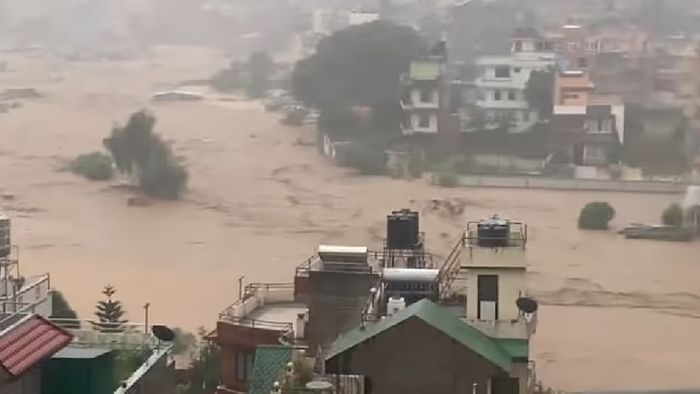Nepal floods: Death toll hits 241, PM Oli admits government delay
Nepal's recent floods and landslides have claimed 241 lives and left thousands displaced. PM KP Sharma Oli urges public support as rescue operations continue.

- Oct 02, 2024,
- Updated Oct 02, 2024, 1:32 PM IST
The death toll due to Nepal floods and landslides has reached 241, while over 4,000 people have been rescued, Prime Minister KP Sharma Oli said on October 1.
During a press conference at Singha Durbar, the Nepal PM admitted that the government delayed search and rescue operations, further urging people to support the government's efforts for relief and rehabilitation works.
He said that the authorities have rescued 4,331 people across the country from the flooding disaster and expressed his commitment to correct shortcomings in the rescue and search operations.
Chief Secretary Eaknarayan Aryal informed that the country suffered losses of approximately Rs 17 billion.
Nearly 900 people, including foreign trekkers, have been rescued by helicopters from different flood-hit areas in the last two days, Home Ministry spokesperson Rishiram Tiwari said, The Kathmandu Post newspaper reported.
The spokesperson said that Nepal Army choppers rescued 683 people—425 people on Sunday and 258 on Monday. “The rescue is ongoing,” he said.
“Apart from disaster response conducted by the Nepal Army, private choppers have also been rescuing stranded foreigners, particularly in the mountain region,” he added.
The exact number of rescues conducted by private choppers is unknown, but operators said roughly 200 foreign trekkers and a few Nepalis have been evacuated in the last two days.
The disaster, which began on Thursday, continued to cause widespread destruction in multiple provinces until Sunday, leaving thousands displaced. Large swathes of eastern and central Nepal have been inundated since Friday.
However, the weather improved from Sunday in Kathmandu providing some relief to the disaster-affected people.
Incessant rain from Thursday to Saturday created havoc across Nepal.
The Kathmandu Valley suffered the most where the death toll crossed 50. More than 20,000 security personnel, including from the Nepal Army, Armed Police Force and Nepal Police, have been deployed for all-out efforts of search, rescue and relief distribution.
Those injured are receiving treatment at various health facilities, Home Ministry spokesperson Rishiram Tiwari said.
Similarly, those affected by the floods and landslides are provided with instant relief materials.
Scientists say that a key reason for the rise in the impact of floods is the built environment, including unplanned construction, especially on floodplains, which leaves insufficient areas for water retention and drainage.
The floods and landslides have thrown life out of gear in many parts of the country, with many highways and road stretches disrupted, hundreds of houses and bridges buried or swept away, and hundreds of families displaced.
Thousands of passengers have been stranded in various places due to road disruption.